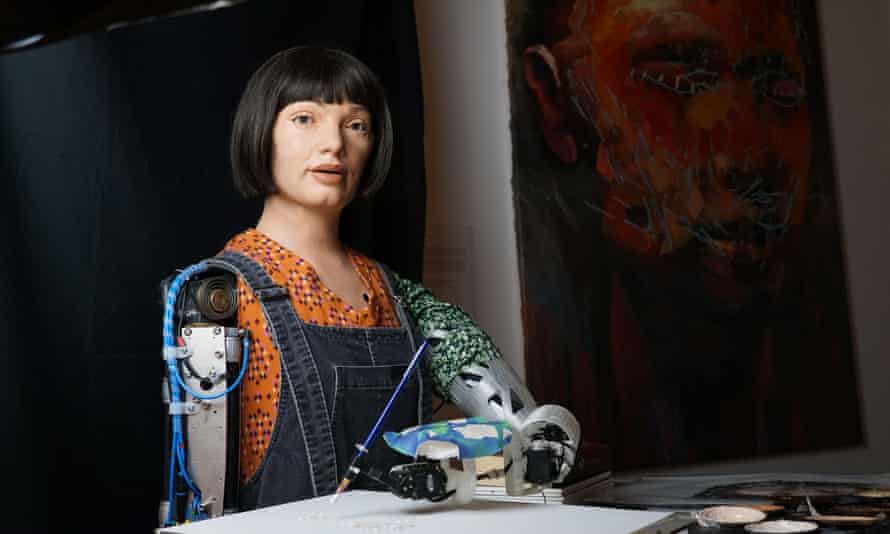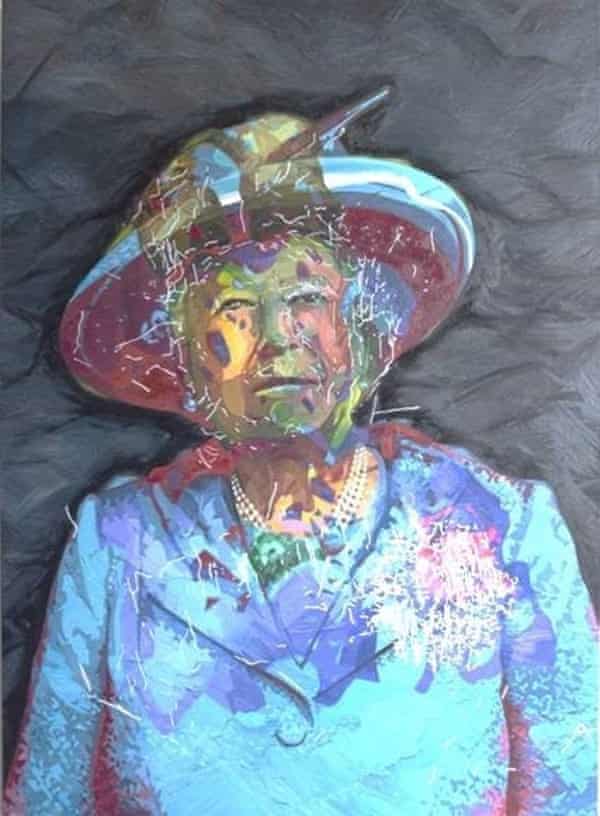At first glance, the Queen could be wearing a tin hat with camouflage netting set against a thunderous sky. A commentary on the inevitable conflicts and turbulence that took place during her 70-year reign, perhaps. Or a thoughtful juxtaposition of stability and instability.
But no, it seems that Ai-Da, the robot artist who painted the Queen’s portrait to mark her platinum jubilee, was simply paying tribute to “an amazing human being”. The monarch’s trademark pearls and bold colours, along with a stoic facial expression, are the standout features of Algorithm Queen, which was unveiled on Friday.

Ai-Da, billed by her creators as “the world’s first ultra-realistic humanoid robot artist”, said: “I’d like to thank Her Majesty the Queen for her dedication, and for the service she gives to so many people. She is an outstanding, courageous woman who is utterly committed to public service.”
Aidan Meller, the robot’s creator, said the first portrait of the monarch by a robot provided an opportunity to think about “all that has changed during the Queen’s life”.

At the time of the Queen’s coronation in 1953, more than a year after she acceded to the throne, the first circuit board computers had just been invented. The next seven decades saw extraordinary advances in computer technology in the UK, including the birth of artificial intelligence.
Named after the computing pioneer Ada Lovelace, Ai-Da has said that in contrast to human artists she does not experience emotions, but “it is possible to train [a] machine learning system to learn to recognise emotional facial expressions”.
But Jonathan Jones, the Guardian’s art critic, said the painting was “yet another example of the cynical, transparent con that is AI art”.
He added: “This delusion works by deliberately ignoring the huge gap between the current state of machine learning and the dream of true AI, which would pass the Turing test and match the complexity of the human mind. Ai-Da is not an artist because she – or rather it – has no independent consciousness.”
The portrait showed the Queen’s eyes with “a vacant, not quite human look. The mixture of leaden accuracy and, at the same time, complete lack of emphasis, feeling or conviction in Ai-Da’s depiction of Her Maj is a telling glimpse of the limits of the AI ‘art’ genre. The machine records, but does not see. Because it has no conscious mind, let alone emotions.”
Sign up to First Edition, our free daily newsletter – every weekday morning at 7am BST
Ai-Da was created by a team of programmers, roboticists, art experts and psychologists. The robot was completed in 2019, and is updated as AI technology improves. Last month, she held her first solo exhibition at the 2022 Venice Biennale.
